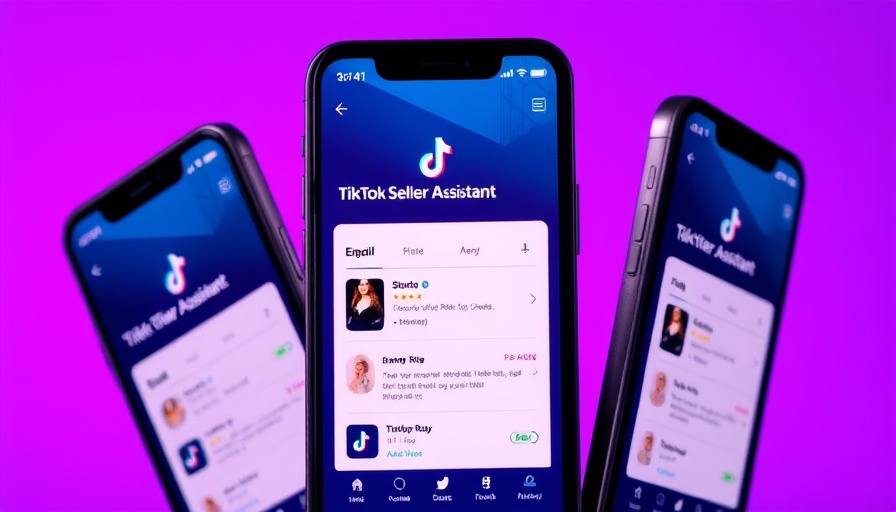
Understanding TikTok's Seller Assistant: A New Ally for Sellers
In an evolving digital marketplace, TikTok has introduced the Seller Assistant, an AI-powered chatbot designed to enhance the experience for brands selling through its platform. This comes as part of TikTok's ongoing effort to engage users in shopping via short, engaging video content. With features aimed solely at assisting sellers, this tool promises to help businesses gain maximum visibility and efficiency in their promotional activities.
The Role of AI in Social Commerce
As technology continues to shape our shopping habits, the addition of AI tools like TikTok's Seller Assistant marks a pivotal development in the realm of social commerce. From personalized recommendations to real-time insights, the Seller Assistant is a blend of innovation and practicality, making it easier for sellers to navigate the complexities of online sales. However, while TikTok is enthusiastic about this advancement, it's essential to critically evaluate how this AI can genuinely support sellers in a crowded online marketplace.
Features of the Seller Assistant: What Can It Do?
The Seller Assistant is not merely a chatbot; it’s equipped to provide a variety of services that could be quite beneficial for sellers. Some of its key features include:
- Optimized Listing Guidance: Sellers receive advice on the best practices for creating product listings that attract buyers.
- Insightful Performance Data: The AI offers immediate access to data, allowing sellers to evaluate how their products are performing.
- Custom Recommendations: Based on user context, the AI provides marketing tips tailored for each seller's needs.
Through these features, TikTok aims to empower sellers to manage their shops and optimize their sales strategies more efficiently than ever before.
Social Implications: What This Means for Families
As TikTok integrates features to facilitate in-app shopping, parents may wonder how this affects their children’s interaction with the platform. It’s well-known that social media can influence purchasing behaviors, especially among young audiences. Parents should take an active role in guiding their children on making informed buying choices while also helping them understand digital marketing tactics. This new assistant may foster a greater understanding of commercial interests, but family discussions around responsible online shopping remain crucial.
The Future of Shopping on TikTok: Trends and Predictions
TikTok's commitment to in-app shopping indicates broader trends in the commerce landscape, where social media platforms are developing tools to keep audiences engaged. Given that TikTok reported a threefold increase in sales during Black Friday last year, it is likely that these trends will only continue to grow. Predictions suggest that as more users engage with in-stream shopping, these AI tools will become increasingly sophisticated, further influencing purchasing habits.
Conclusion: Staying Informed and Engaged
As TikTok enhances its offerings for sellers, families must remain informed about how technology intersects with children’s shopping habits. Understanding these developments can help parents make responsible decisions about their kids' interactions with digital commerce. Encouraging discussions at home about the implications of online shopping can lead to healthier consumption habits.
By being proactive and engaging with children about their online experiences, parents can contribute to developing critical thinking skills in their young ones, guiding them to navigate the digital space safely. Awareness and communication can empower families to use TikTok's advancements productively and thoughtfully.
 Add Row
Add Row  Add
Add 




Write A Comment